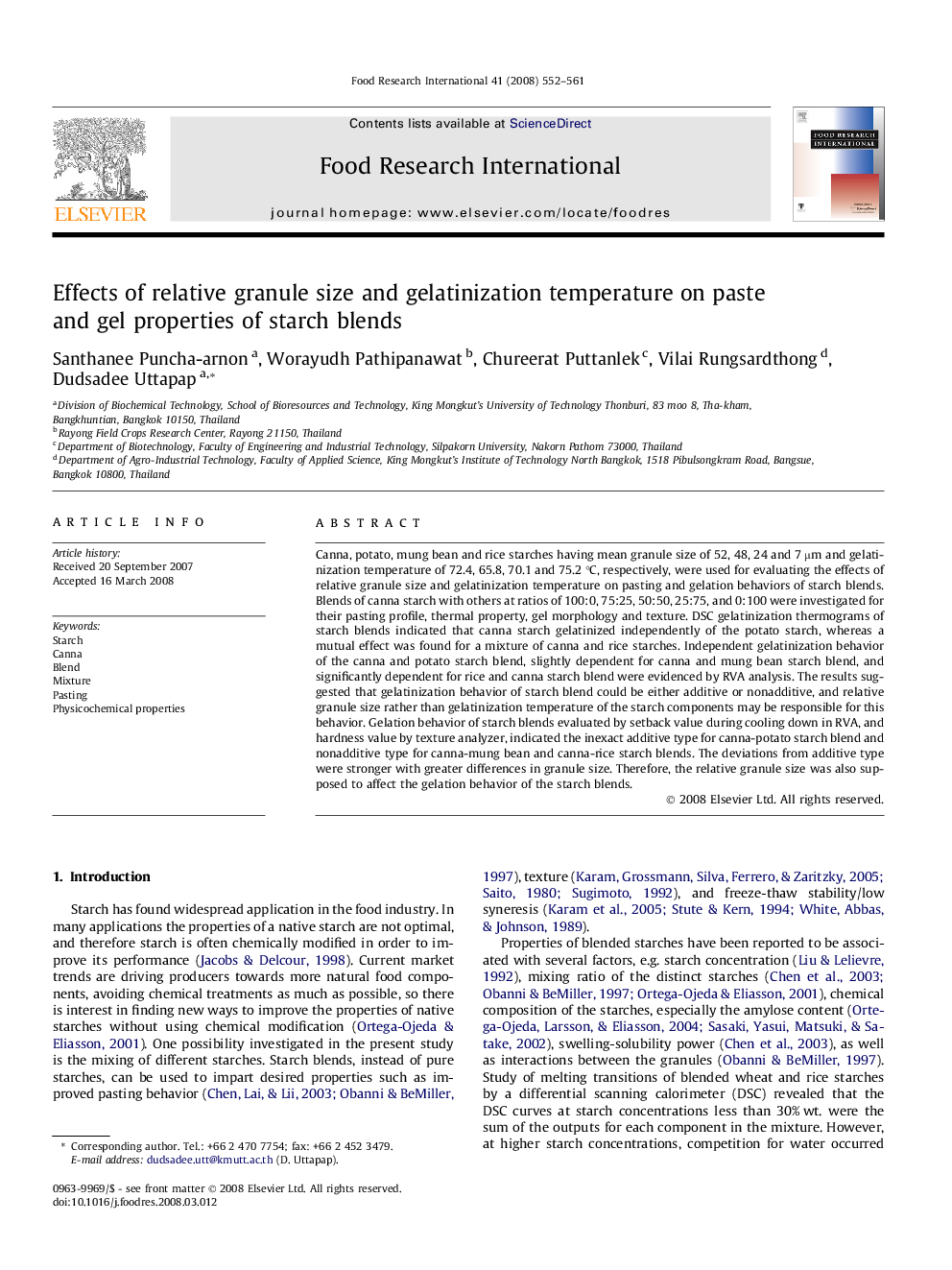| Article ID | Journal | Published Year | Pages | File Type |
|---|---|---|---|---|
| 4562717 | Food Research International | 2008 | 10 Pages |
Canna, potato, mung bean and rice starches having mean granule size of 52, 48, 24 and 7 μm and gelatinization temperature of 72.4, 65.8, 70.1 and 75.2 °C, respectively, were used for evaluating the effects of relative granule size and gelatinization temperature on pasting and gelation behaviors of starch blends. Blends of canna starch with others at ratios of 100:0, 75:25, 50:50, 25:75, and 0:100 were investigated for their pasting profile, thermal property, gel morphology and texture. DSC gelatinization thermograms of starch blends indicated that canna starch gelatinized independently of the potato starch, whereas a mutual effect was found for a mixture of canna and rice starches. Independent gelatinization behavior of the canna and potato starch blend, slightly dependent for canna and mung bean starch blend, and significantly dependent for rice and canna starch blend were evidenced by RVA analysis. The results suggested that gelatinization behavior of starch blend could be either additive or nonadditive, and relative granule size rather than gelatinization temperature of the starch components may be responsible for this behavior. Gelation behavior of starch blends evaluated by setback value during cooling down in RVA, and hardness value by texture analyzer, indicated the inexact additive type for canna-potato starch blend and nonadditive type for canna-mung bean and canna-rice starch blends. The deviations from additive type were stronger with greater differences in granule size. Therefore, the relative granule size was also supposed to affect the gelation behavior of the starch blends.
